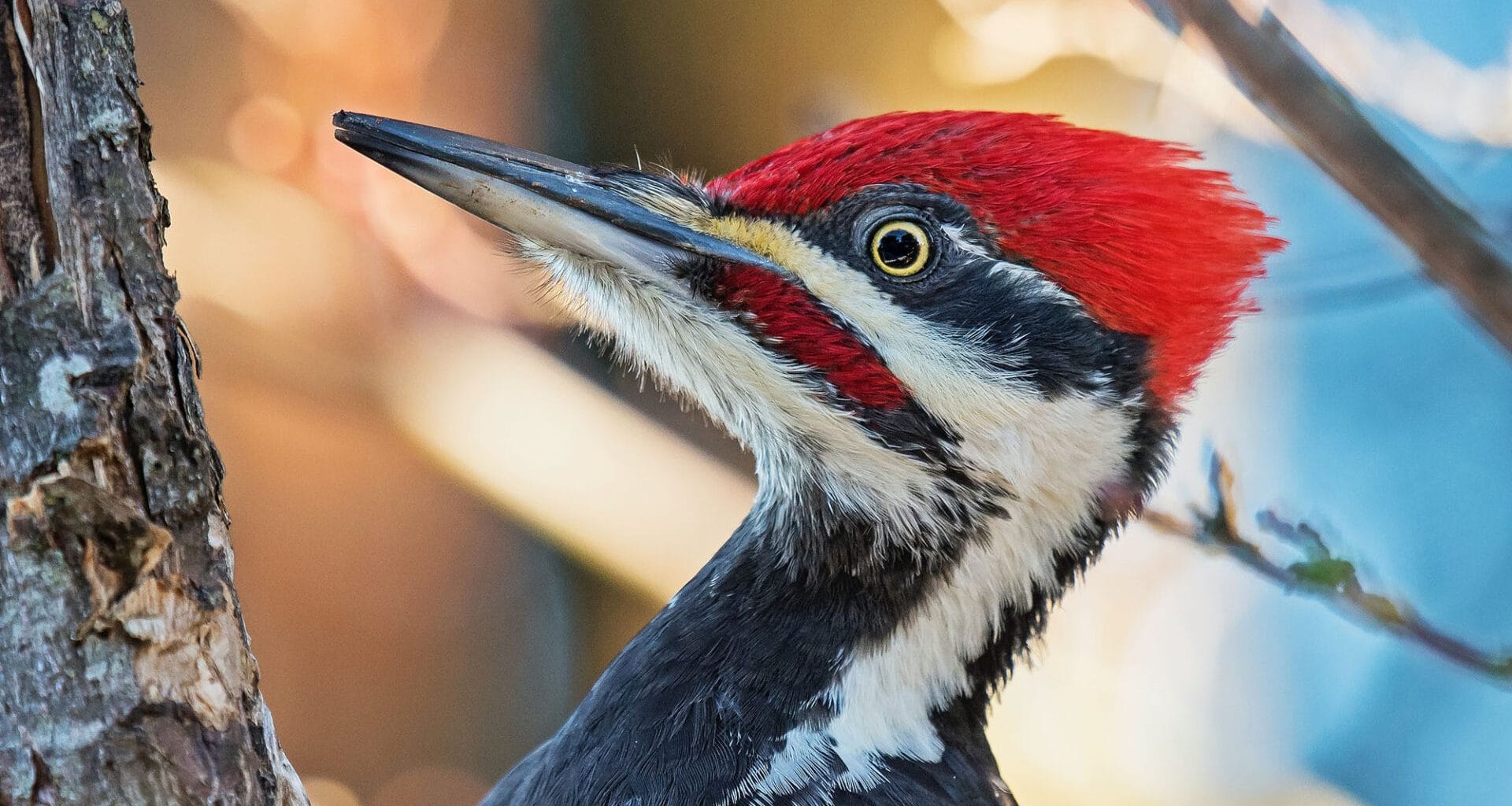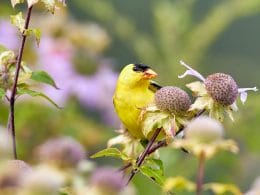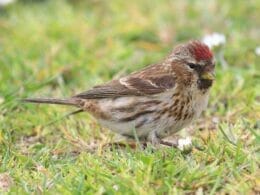The woodpecker we are most familiar with is more often seen sawing or shooting holes in wood. Woody Woodpecker usually uses his jackhammer style beak to get out of sticky situations. But despite the charm of Disney’s beloved character, real woodpeckers can be a real problem. Do you know how to stop woodpeckers from pecking your house?
If you have a woodpecker that has come knocking, don’t sweat it. Here are a few solutions to help keep your home safe from woody’s pesky pals.
How to Stop Woodpeckers from Pecking Your House
1. Decoys
Imitation predators such as owl or hawk decoys can be quite effective over a large area. These are best used in prominent locations where they can be easily seen. The downside of decoys is that birds do get used to them when they stay in the same place. This is the easiest way how to stop woodpeckers from pecking your house.
To get the best use from your decoys they should be moved every few days. Moving them once or twice a week should suffice, but try to have as many different perches as possible. Birds have a good memory and when a decoy is placed in the same location repeatedly, it becomes less effective.
It is a good tactic to have a few different decoys that can be used in place, or in conjunction with one another. Owls and hawk decoys are great, but if you have a bird feeder these can have a negative impact on the amount of activity it attracts.
Author Note: If you have quite a few trees close to the house use one decoy out in the open. Use another in the trees, this will limit the locations where birds seek shelter from predators. If a woodpecker can sit in a nearby tree and observe a decoy in relative comfort, the decoy will quickly become useless.
A rubber snake can also be an effective decoy, but the impact is usually more localized. Stapling a rubber snake to the wall where a woodpecker is causing damage should make him think twice. Drape the snake around a satellite dish, or dangle it from a high cable if you don’t want a staples advertisement on your wall.
2. Shiny Objects

Birds have amazing eyesight but are unable to distinguish reflections from the real world. Territorial male birds can fight their reflections to the point of exhaustion. This combination of hindrance and virtue can be used against them.
Partial reflections on moving objects can catch a birds eye and make it impossible for them to relax. A bird naturally seeks safety in its ability to fly, if there is a disturbance above, its escape route is jeopardized. So moving reflections above them makes it particularly hard to feel comfortable.
Some birds like shiny objects, but when the shiny objects are moving around it antagonises them. Hanging a shiny mobile above the area where the woodpecker is working will cause a distraction he is unable to ignore.
3. Mylar Helium Balloons
The idea of climbing more than a few steps on a ladder can lead to crippling fear in some people. Shiny helium-filled balloons are a great way to deter woodpeckers, especially if you suffer from vertigo.
Even if you are happy up a ladder, the woodpecker might still be knocking high out of reach. This is another perfect opportunity to use mylar balloons. The main downside of using mylar balloons is that they don’t last long. Balloons are another top way how to stop woodpeckers from pecking your house.
4. Bird Scare Tape
Birds can see UltraViolet rays, but UV isn’t reflected by most reflective surfaces. This is another reason that birds fly into windows. Bird scare tape is a reflective ribbon or tape that reflects light in the UltraViolet spectrum.
Bird scare tape can be cut into lengths and stapled loosely in the area that the woodpecker is damaging. Scare tape needs to be kept slack so that the wind can rustle it. This movement scatters light, casts moving shadow,s and can imitate the slithering of a snake.
Bird scare tape is often a 3 prong attack. Reflective shiny surfaces, UV reflecting capability, and also the mimicking of a snake’s scales completes the deterrent effect
5. Sonic Deterrents
For those with a love of technology, a sonic deterrent is probably the way to turn. Emitting a range of loud bird calls, these deterrents can be effective in an area of up to one acre. Sonic deterrents can replicate a number of different calls designed to deter specific species.
Not only do these devices imitate predatory birds, but they also emulate distress calls too. Research has shown that birds of other species and even other animals can identify specific bird calls.
Author Note: Ravens, crows, and blue jays seem to make a game of identifying potential threats. Hovering and perching on just-out-of-reach branches squawking loudly. They call out joyfully like kids in a playground singing, “I saw through your camouflage.”
The manufacturers of some of these sonic deterrents have really done their homework to deliver a product with a range of options. The type, interval, and volume of the calls can be adjusted. Some units even have a day and night sensor to ensure that the correct calls are used at all times.
Household Items for Deterrents

Woodpeckers don’t like strong smells. Garlic and peppermint are reported to be effective deterrent smells.
Melt two cups of flavorless coconut oil in the microwave for 30 seconds to 1 min on medium heat. Place a whole bulb of garlic in the oil and put it back in the microwave for another 5 mins on medium. Leave to stand in a warm spot for three to four days
If it is a hot day and the coconut oil is very liquid, put it in the refrigerator for half an hour and solidify it slightly. If you live in a warm climate apply the deterrent in the early morning or late evening.
Coconut Oil
Coconut oil works very well, due to its thickness it doesn’t run or wash off too easily in the rain. Another great thing about coconut oil for a job like this is that it is white and not yellow like most other oil. If you don’t have coconut oil, any cooking oil will do.
Don’t use your valuable imported Italian extra virgin olive oil for this. Unless you want to use the garlic flavor for a salad dressing as well. Even old cooking oil from the deep fat fryer will work just fine as long as you haven’t burned it black. Apply the garlic oil nice and thick with a paintbrush.
If the treatment is preemptive or you have caught him early you could be in luck. If the damage is just some dents and cracked paint with no exposed wood, start treatment right away. You can put off repainting until the woodpecker has given up.
Applying the Oil to Wood
Note that oil will soak into raw wood that has been damaged by a woodpecker. When it comes to repainting, oil will discolor the paint and impact the lifespan of the paint job. If the woodpecker has started to penetrate into the wood, repair the damage first.
Use some wood filler to repair any holes and deep dents. Once it is dry, use sandpaper to smooth the surface, wipe with a damp cloth to remove the dust and loose dirt. Wipe again with a dry cloth, then repaint before treatment.
If you need to apply the deterrent to a large area you can use a spray bottle. It is a slightly different recipe using sunflower oil instead of coconut and it must be diluted.
Mix one tablespoon of garlic sunflower oil with 2 cups of water and one teaspoon of dishwashing liquid. The dishwashing liquid will lower the surface tension of the water and break up the fats in the oil. This helps to mitigate clogging of the spray nozzle.
Note that the smell will wear off in the open air after four or five days, sooner if you have used a spray. Reapplication may be necessary for a few weeks to ensure he finds a different drum kit.
Vicks Vaporub
Vicks vaporub could be a great home method with its strong eucalyptus smell. The thick vaseline texture will also shed raindrops and retain the smell for a few days.
Why Do Woodpeckers Peck Wood?

Woodpeckers eat the grubs and insects that survive on dead wood. These insects are the first stage of decomposing and breaking down tough wood. After the wood has been softened by fungus and insects it falls to the floor, where it finally becomes a usable compost for the forest.
Author Note: Woodpeckers aid in the process of decomposing dead trees and branches, and help to sustain their own food supply. In their search for a meal, they strip soft bark from dead limbs which is broken down much quicker on the ground.
Their strong beaks and hammer blows bore into wood that is too hard for other critters on the surface. Once the exterior of a branch has been penetrated by a woodpecker, the termites can move in. As the termites bore into the wood, it loses its strength and breaks from the tree.
Male woodpeckers also use the knocking sound to attract a mate. They strategically seek out hollow trees or branches that resonate and amplify the sound of their pecking. The wooden siding of an empty loft can provide great acoustics for these percussion experts.
Woodpecker Damage
Woodpeckers bore into wood in search of the grubs and insects that live beneath the bark of dead tree limbs. A woodpecker knocking against your house can actually be an early warning. They prefer soft and rotting wood as it is easy to bore into, not only for them, but also the insects they eat.
It is highly unlikely that a woodpecker is capable of undermining the structural integrity of your home. However, they can bore into wood that has been surface treated against termites.
This literally opens a doorway for other pests to cause much larger problems in the future.
Conclusion
The distant drumming of a woodpecker in a forest can set an idyllic scene, but closer to home it becomes an irritation. The incessant knocking of a woodpecker on your house can almost feel like torture.
Add that to the damage they can cause to your home and property, and it becomes no laughing matter. We hope you enjoyed this article on how to stop woodpeckers from pecking your house.
Fly high friends!
FAQ
Home or paint stores are able to put an additive in the paint that makes no difference to its appearance or application but doesn’t taste or smell nice to the woodpecker. You apply it as normal to the exterior of the house and Bingo!
They might actually be doing you a favor. They peck because they are looking for bugs to eat. If they are pecking at your house, it may mean you have a bigger problem – termites. However, if the woodpecker is drumming (ie, pecking really loud), that is more likely to mean they are being territorial or signaling to a mate.
Absolutely. Not only are they terrifically entertaining and interesting but also, they play a really important role in your local ecosystem. Their holes provide homes to a host of other animals and the debris they dislodge from the tree feeds the understory and all the animals that supports.











I live in the Fountain, Colorado area. We have a Woodpecker pecking on and around our chimney. The chimney is stucco in a green color paint. I repaired damage to the stucco. The area that I repaired has been reopened. I installed spikes as suggested to keep them away. It worked for awhile. Now the damage is above the spikes, around the chimney under the eave and under rain gutter touching the chimney. Would changing the color of the chimney help. Or making a woodpecker house and attaching it next to the chimney area. The area of the damage is 25 feet above our sidewalk.